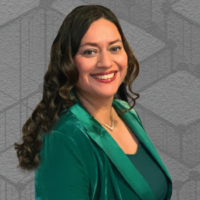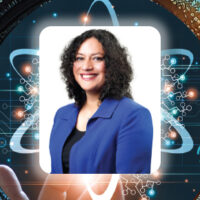
In 1977, Star Wars exploded on the big screen. Being science fiction, many of the technologies used by the Empire and the Rebellion seemed to be far advanced from those utilized by the average moviegoer. Who can forget the memorable moment of watching Princess Leia being projected in a holographic 3-D image as she delivered her message to the wrong person, Luke Skywalker, “Help me Obi-Wan Kenobi. You’re my only hope.”
We must not forget the important artificial intelligence (AI) that made all of this possible: (an all-time favorite of mine) R2-D2. Perhaps in the non-movie world we have not quite reached the AI sophistication of the droids—or as I like to call them AIs—as in the Star Wars’ movies, but the question remains: “what do we know?” with respect to AIs and the financial crime prevention industry. The headline article, Artificial Intelligence and Machine Learning: What do we know?, captures what financial institutions are doing to implement AIs into their current compliance programs by defining the difference between AI and machine learning and at the same time delivers words of advice for those that are just starting the AI and machine learning implementation journey.
If you have not already guessed, one of the focuses of this edition is AI and machine learning. Our second cover article, The Artificial Intelligence Revolution Is Coming…, covers both the weaknesses and strengths of AIs and humans. At the same time, it explains where anti-money laundering (AML) departments should implement the use of AI technology. One of my favorite quotes in the article is “…while AI assistants will support an investigator’s work, they will be the automated Watson to a human Holmes.”
Like many editions preceding this Annual Conference issue, we have cutting-edge topics discussed in our articles. The Eradication of Organ Trafficking: A Case for Partnerships and Protocols in AML Environments brings to light the heinous crime of organ trafficking and how our combined efforts within the financial crime prevention industry, international banking groups, research groups and more can make a difference in bringing awareness to this epidemic. ACAMS is proud to partner with notable leaders in the fight against organ trafficking: BMO, Babson College, the Pontifical Academies of Sciences and Social Sciences at Vatican City, the World Health Organization, Harvard University Medical School and Project Organ.
Nonprofit organizations (NPOs) are considered high-risk in the financial industry, but there is another side. The article, De-Risking and the Effects on the World’s Neediest, explains the effects on NPOs and the people they serve when de-risking occurs. What’s more, the author encourages multi-stakeholder dialogues to seek solutions for both financial institutions and NPOs. ACAMS is working closely with the World Bank, financial institutions and NPOs to learn more about the needs of both industries.
In addition, I would like to congratulate all of our ACAMS’ Award winners and especially, our ACAMS Today Article of the Year recipient for 2018, James P. Cummings, Jr.
Finally, I am amazed by the plethora of articles contained in this edition and I would encourage you to read the entire issue. To paraphrase Leia’s words, some of us might be the only hope or defense between criminals and their financial crimes.
See you in Vegas!










